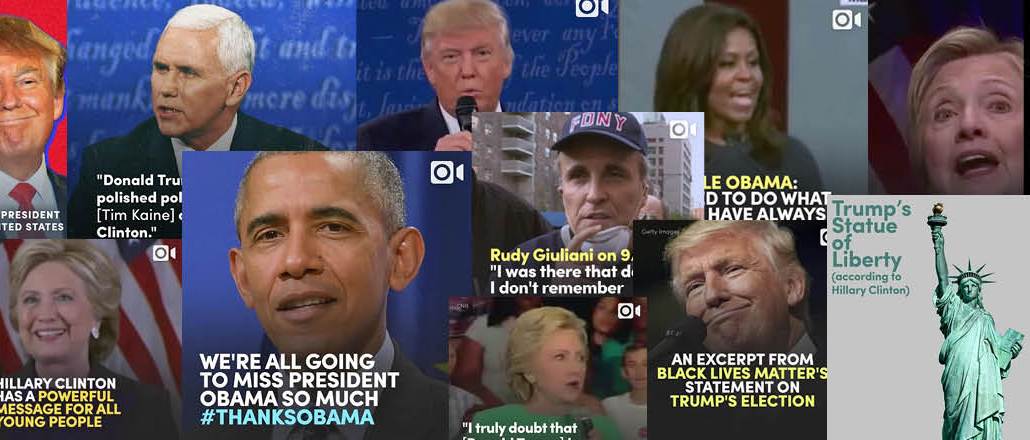
Many publishers have focused on building audiences on Snapchat. But for those without one of the coveted channels in the app’s Discover section, Instagram is an attractive alternative.
Millennial-focused Mic is one such publisher. In the past three months, it has reassigned 10 people to Instagram, away from Twitter, graphics and editing/writing. In addition to producing video for Mic’s main account, @Mic (82,500 followers), they’ve taken a vertical strategy to the platform, spinning up issues-based channels geared toward specific interest groups. They post on average three to four times a day, mostly video, but also graphic-based stories and static images.
It’s seen some early success with @TheStrutByMic, a body-positivity channel with 37,300 followers; @DeliveredByMic, for foodies, with 24,000 followers; and feminism channel @TheSlayByMic, with 12,700 followers. Other, smaller channels include @TheSwaddlebyMic, for parents; and LGBTQ channel, @BeyondPrideByMic. All told, Mic has about 250,000 followers across nine channels on Instagram and had 5 million views across accounts in October, according to the publisher.
Mic’s Instagram team is a big investment for the publisher; it’s second in size only behind its Facebook video team, which numbers about 14. The Instagram team is as big as some publishers’ Snapchat teams, and like Snapchat, the content is designed specifically for Instagram and isn’t repurposed for Facebook or other platforms.

One thing Mic isn’t doing is deriving any traffic or going aggressively after advertising on the platform yet. Publishers can now add links to their Instagram stories to pull users back to their sites, and some also are starting to monetize their accounts, by promoting commerce or selling branded content.
Cory Haik, chief strategy officer at Mic, said the publisher is committed to Instagram, though, because it can reach people there that it’s not reaching on other platforms.
“The audiences we’re finding there are not necessarily crossover audiences to our newsletter or Facebook, so we see them as new audiences,” she said. In addition, she said, “There’s no barrier between the user and the story; users don’t have to click a link to access it. It’s one visual experience at a time.” The staff is flexible enough to pitch in on other things.
As for monetizing Instagram, she said Mic is in conversations with advertisers, but the audience needs to be at least twice what it is now to appeal to brands. “We’re pretty mindful of the finite resources, but in this case, we’re making a bet on taking a specific approach on Instagram.”
The argument against rushing in with branded content is in holding off until a publisher can do it in a way that ties in with the marketer but is consistent with its own brand. Mic’s own video news content on the platform performs at a consistently high level, but a recent post for Subway, with just 1,604 views, didn’t perform as well as Mic’s own content usually does, said Benjamin Arnold, chief growth officer for We Are Social, North America. “You have to wonder just how effectively and natively the publisher will be able to promote brand messaging through its feed,” he said.
More in Media

Walmart rolls out a self-serve, supplier-driven insights connectors
The retail giant paired its insights unit Luminate with Walmart Connect to help suppliers optimize for customer consumption, just in time for the holidays, explained the company’s CRO Seth Dallaire.

Research Briefing: BuzzFeed pivots business to AI media and tech as publishers increase use of AI
In this week’s Digiday+ Research Briefing, we examine BuzzFeed’s plans to pivot the business to an AI-driven tech and media company, how marketers’ use of X and ad spending has dropped dramatically, and how agency executives are fed up with Meta’s ad platform bugs and overcharges, as seen in recent data from Digiday+ Research.

Media Briefing: Q1 is done and publishers’ ad revenue is doing ‘fine’
Despite the hope that 2024 would be a turning point for publishers’ advertising businesses, the first quarter of the year proved to be a mixed bag, according to three publishers.





